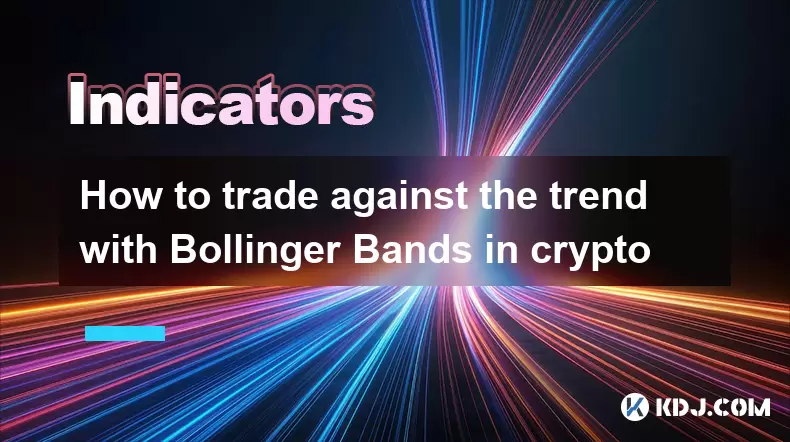-
 Bitcoin
Bitcoin $117500
-0.28% -
 Ethereum
Ethereum $3558
0.05% -
 XRP
XRP $3.392
-1.64% -
 Tether USDt
Tether USDt $1.000
-0.04% -
 BNB
BNB $728.3
-0.65% -
 Solana
Solana $175.4
-0.82% -
 USDC
USDC $0.9998
-0.01% -
 Dogecoin
Dogecoin $0.2398
1.83% -
 TRON
TRON $0.3179
-2.38% -
 Cardano
Cardano $0.8204
-0.07% -
 Hyperliquid
Hyperliquid $44.07
-0.62% -
 Stellar
Stellar $0.4581
-1.03% -
 Sui
Sui $3.790
0.35% -
 Chainlink
Chainlink $18.16
1.68% -
 Hedera
Hedera $0.2643
-0.28% -
 Avalanche
Avalanche $24.22
2.25% -
 Bitcoin Cash
Bitcoin Cash $512.2
-0.43% -
 Shiba Inu
Shiba Inu $0.00001479
0.54% -
 Litecoin
Litecoin $111.1
8.86% -
 UNUS SED LEO
UNUS SED LEO $8.986
0.08% -
 Toncoin
Toncoin $3.194
-0.68% -
 Polkadot
Polkadot $4.337
1.87% -
 Uniswap
Uniswap $10.02
-1.95% -
 Monero
Monero $321.7
1.05% -
 Ethena USDe
Ethena USDe $1.001
-0.04% -
 Bitget Token
Bitget Token $4.870
0.73% -
 Pepe
Pepe $0.00001325
1.35% -
 Dai
Dai $0.9999
0.00% -
 Aave
Aave $314.1
-2.09% -
 Cronos
Cronos $0.1203
1.58%
How to trade against the trend with Bollinger Bands in crypto
Bollinger Bands help identify overbought or oversold crypto price levels, offering potential counter-trend trade opportunities when combined with candlestick patterns and momentum indicators.
Jul 12, 2025 at 06:15 pm

Understanding the Bollinger Bands Indicator
Bollinger Bands are a widely used technical analysis tool in the cryptocurrency market, developed by John Bollinger. They consist of three lines: a simple moving average (SMA) in the center, typically calculated over 20 periods, and two outer bands that represent standard deviations above and below the SMA. These bands dynamically adjust to price volatility.
In crypto trading, where volatility is often extreme, Bollinger Bands help traders identify potential overbought or oversold conditions. When prices touch or move outside the upper band, it may indicate overbought territory, suggesting a possible reversal. Conversely, when prices reach or fall below the lower band, it could signal an oversold condition, hinting at a potential upward bounce.
However, using Bollinger Bands for counter-trend trading, also known as contrarian trading, requires careful interpretation. Traders must understand that price touching a band doesn't automatically mean a reversal will occur. It's essential to combine this indicator with other tools and confirmations before entering a trade.
Why Trade Against the Trend?
Counter-trend trading involves taking positions opposite to the prevailing market direction. In the highly volatile world of cryptocurrencies, trends can be strong but short-lived. Markets often experience rapid moves followed by sharp corrections, making reversal opportunities attractive for experienced traders.
The appeal lies in catching the early stages of a reversal, potentially offering high reward-to-risk ratios. For example, if Bitcoin has been rallying strongly and touches the upper Bollinger Band, a trader might look to enter a short position, anticipating a pullback. Similarly, during a steep drop, touching the lower band might present a long opportunity.
This strategy isn't without risks. Entering too early or misjudging momentum can lead to significant losses. Therefore, identifying valid reversal signals and managing risk effectively becomes crucial when trading against the trend using Bollinger Bands.
Setting Up the Bollinger Bands for Counter-Trend Trading
Before executing any trades, ensure your chart setup aligns with counter-trend strategies:
- Timeframe: Use higher timeframes like 1-hour or 4-hour charts for more reliable signals.
- Default Settings: Stick with the default settings of 20-period SMA and 2 standard deviations unless backtesting suggests otherwise.
- Price Action Confirmation: Look for candlestick patterns near the bands that suggest rejection, such as dojis, hammers, or engulfing candles.
Once set up, observe how price interacts with the bands. A key signal occurs when price moves beyond a band and then quickly returns within it — this is called a "band reject" and may indicate strength in the opposing direction.
Also, watch for Bollinger Band width contraction, which often precedes a breakout. However, in counter-trend trading, you're looking for signs of exhaustion rather than continuation.
Entry Signals Using Bollinger Bands
To execute a counter-trend trade using Bollinger Bands, follow these steps:
- Identify Overextension: Wait until price reaches or exceeds the upper or lower band.
- Look for Rejection Candles: Observe candlestick formations indicating price rejection from the band.
- Check for Momentum Divergence: Use oscillators like RSI or MACD to confirm weakening momentum in the current trend.
- Wait for Price to Close Back Inside the Bands: This confirms that the initial overextension was temporary.
- Place Entry Order: Enter the trade once confirmation is clear, ideally after a candle closes signaling a reversal.
For instance, if Ethereum shows a bearish engulfing pattern on the weekly chart while hitting the upper Bollinger Band, and the RSI starts to decline from overbought levels, this could be a solid entry point for a short trade.
It’s important to note that not every touch of the band results in a reversal. Always wait for multiple confluences before pulling the trigger.
Managing Risk in Counter-Trend Trades
Risk management is critical in counter-trend trading due to the unpredictable nature of crypto markets.
- Set Stop Losses Above/Below Recent Swings: If going short after touching the upper band, place a stop loss slightly above the recent swing high.
- Use Trailing Stops: As the price moves in your favor, trail the stop to lock in profits.
- Position Sizing: Only risk a small percentage of your portfolio on each trade — typically no more than 1–2%.
- Avoid Overleveraging: High leverage increases the likelihood of liquidation, especially in volatile assets like crypto.
Also, monitor news events or macroeconomic factors that can sustain trends longer than expected. Even if the bands suggest a reversal, external catalysts may delay or negate the anticipated move.
Backtesting and Strategy Validation
Before applying a Bollinger Band-based counter-trend strategy in live markets, perform thorough backtesting.
- Historical Chart Analysis: Review past price data across multiple crypto assets to see how frequently reversals occurred after touching the bands.
- Use TradingView or Similar Platforms: Apply Bollinger Bands on historical charts and simulate entries and exits.
- Track Win Rate and Profitability: Calculate your win rate, average gain/loss, and overall profitability to assess viability.
- Adjust Parameters Based on Asset Behavior: Some coins may respond better to different settings, so tailor your approach accordingly.
Remember, what works well on BTC may not work on altcoins. Each asset class behaves differently based on its liquidity, volatility, and correlation with broader market sentiment.
Frequently Asked Questions
Q: Can Bollinger Bands be used alone for counter-trend trading?
While Bollinger Bands provide useful insights, relying solely on them can lead to false signals. Combining them with candlestick patterns, volume indicators, and support/resistance levels improves accuracy.
Q: What timeframes are best for counter-trend trading with Bollinger Bands?
Higher timeframes like 1-hour, 4-hour, or daily charts offer more reliable signals. Shorter timeframes increase noise and reduce the effectiveness of reversal setups.
Q: How do I know if a reversal off the Bollinger Band is genuine?
Look for confluence: rejection candlesticks, divergence on RSI or MACD, and volume spikes in the opposite direction of the trend. Multiple confirming factors increase confidence.
Q: Should I always trade every Bollinger Band touch?
No. Many touches occur during strong trends and result in continued movement rather than reversals. Focus only on those that align with other technical clues and market context.
Disclaimer:info@kdj.com
The information provided is not trading advice. kdj.com does not assume any responsibility for any investments made based on the information provided in this article. Cryptocurrencies are highly volatile and it is highly recommended that you invest with caution after thorough research!
If you believe that the content used on this website infringes your copyright, please contact us immediately (info@kdj.com) and we will delete it promptly.
- SUI Altcoin: Primed for Potential 100x Gains?
- 2025-07-20 04:50:12
- Panicked, Child, Swallowed Coin: A Parent's Worst Nightmare (and What to Do)
- 2025-07-20 04:35:12
- WLFI Token Tradability: World Liberty Finance's Bold Move Under Trump's Crypto Wing
- 2025-07-20 04:50:12
- Floki Price Rockets: Breakout Rally or Meme Coin Mirage?
- 2025-07-20 04:35:12
- Tinubu, the North, and Appointments: Too Little, Too Late?
- 2025-07-20 03:20:15
- Stellar Blade Hacked: When Crypto Scams Target Your Favorite Games
- 2025-07-20 03:50:12
Related knowledge

Advanced RSI strategies for crypto
Jul 13,2025 at 11:01am
Understanding the Basics of RSI in Cryptocurrency TradingThe Relative Strength Index (RSI) is a momentum oscillator used to measure the speed and chan...

Crypto RSI for day trading
Jul 12,2025 at 11:14am
Understanding RSI in the Context of Cryptocurrency TradingThe Relative Strength Index (RSI) is a momentum oscillator used to measure the speed and cha...

Crypto RSI for scalping
Jul 12,2025 at 11:00pm
Understanding RSI in the Context of Crypto TradingThe Relative Strength Index (RSI) is a momentum oscillator widely used by traders to measure the spe...

What does an RSI of 30 mean in crypto
Jul 15,2025 at 07:07pm
Understanding RSI in Cryptocurrency TradingRelative Strength Index (RSI) is a momentum oscillator widely used in cryptocurrency trading to measure the...

What does an RSI of 70 mean in crypto
Jul 13,2025 at 06:07pm
Understanding the RSI Indicator in Cryptocurrency TradingThe Relative Strength Index (RSI) is a widely used technical analysis tool that helps traders...

Does RSI work in a bear market for crypto
Jul 16,2025 at 01:36pm
Understanding RSI in Cryptocurrency TradingThe Relative Strength Index (RSI) is a momentum oscillator used by traders to measure the speed and change ...

Advanced RSI strategies for crypto
Jul 13,2025 at 11:01am
Understanding the Basics of RSI in Cryptocurrency TradingThe Relative Strength Index (RSI) is a momentum oscillator used to measure the speed and chan...

Crypto RSI for day trading
Jul 12,2025 at 11:14am
Understanding RSI in the Context of Cryptocurrency TradingThe Relative Strength Index (RSI) is a momentum oscillator used to measure the speed and cha...

Crypto RSI for scalping
Jul 12,2025 at 11:00pm
Understanding RSI in the Context of Crypto TradingThe Relative Strength Index (RSI) is a momentum oscillator widely used by traders to measure the spe...

What does an RSI of 30 mean in crypto
Jul 15,2025 at 07:07pm
Understanding RSI in Cryptocurrency TradingRelative Strength Index (RSI) is a momentum oscillator widely used in cryptocurrency trading to measure the...

What does an RSI of 70 mean in crypto
Jul 13,2025 at 06:07pm
Understanding the RSI Indicator in Cryptocurrency TradingThe Relative Strength Index (RSI) is a widely used technical analysis tool that helps traders...

Does RSI work in a bear market for crypto
Jul 16,2025 at 01:36pm
Understanding RSI in Cryptocurrency TradingThe Relative Strength Index (RSI) is a momentum oscillator used by traders to measure the speed and change ...
See all articles

























































































